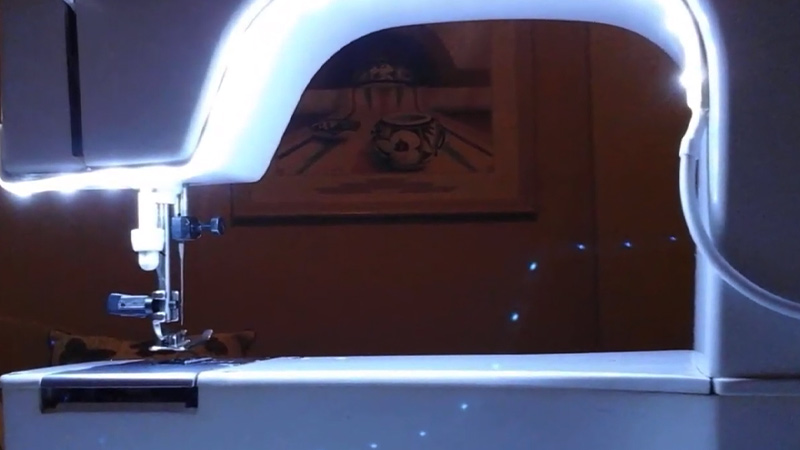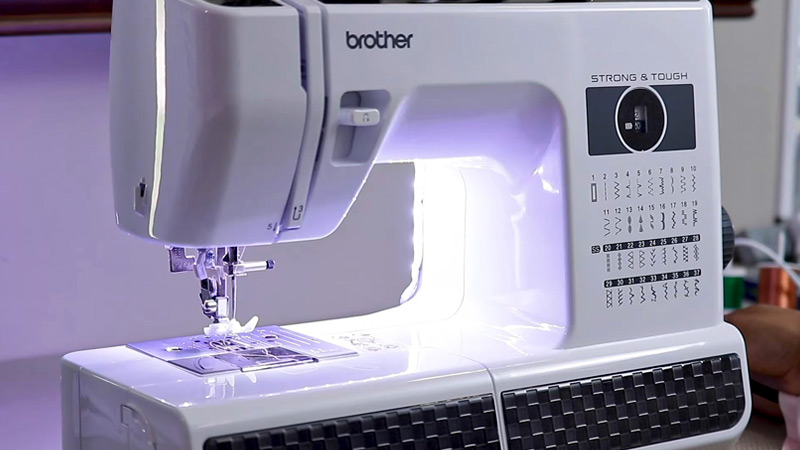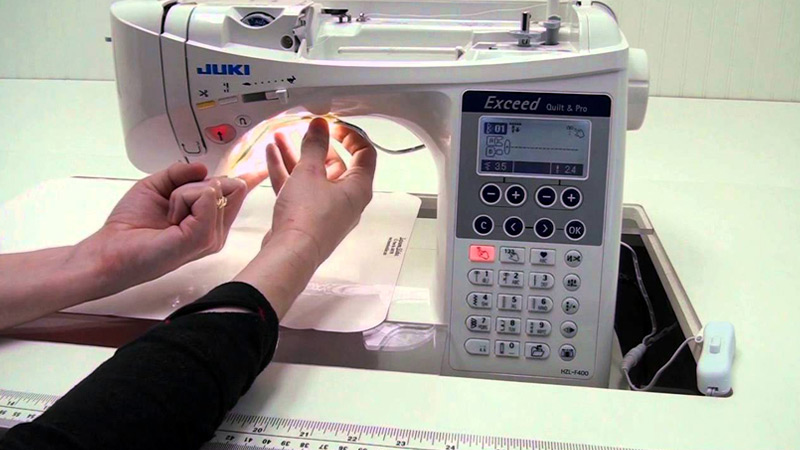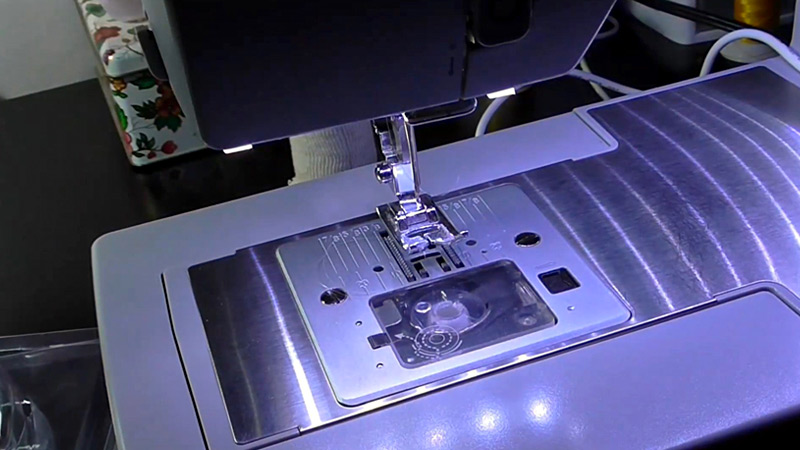Addressing the query of potential eye discomfort from LED lights on sewing machines, this exploration seeks to unravel the impact of these widely used illuminations.
While LED lights offer energy efficiency and enhanced visibility, concerns about their potential effects on eye health linger.
The emission of blue light, a characteristic of LEDs, raises questions about prolonged exposure and its implications for eye strain.
This investigation delves into the intricate balance between the advantages of LED lights in sewing environments and the potential risks they may pose to eye comfort.
By navigating this nuanced landscape, we aim to suggest prudent practices for ensuring a harmonious coexistence between LED illumination and ocular well-being.

Does Led Lights on Sewing Machines Hurt Eyes? 5 Factors to Consider
LED lights on sewing machines, like any light source, have the potential to cause eye discomfort if not used properly.
LED lights emit a certain amount of blue light, and prolonged exposure to high-intensity blue light can contribute to eye strain and fatigue.
Here are some factors to consider:
1. Blue Light Emission
LED lights emit a higher proportion of blue light compared to traditional incandescent bulbs.
While blue light is present in natural sunlight and is essential for regulating our circadian rhythm, excessive exposure, especially in artificial lighting, can potentially affect eye health.
2. Intensity and Brightness
The intensity and brightness of LED lights can impact eye comfort. If the lights are too bright, they may cause glare and discomfort. Adjusting the brightness to a comfortable level can help reduce eye strain.
3. Color Temperature
LED lights can have different color temperatures, ranging from warm to cool. Cool white LEDs emit more blue light, which may be more straining to the eyes.
Some sewing machines allow users to adjust the color temperature; choosing a warmer tone might be more comfortable.
4. Proximity and Duration of Exposure
Proximity to the LED lights and the duration of exposure are important factors. Working at a very close range to bright lights for extended periods may contribute to eye fatigue.
Positioning the lights at an angle or using diffusers can help mitigate direct exposure.
5. Individual Sensitivity
People vary in their sensitivity to light. Some individuals may be more susceptible to eye strain or discomfort caused by blue light, while others may not experience significant issues.
What Are Led Lights and How Do They Work?

LED stands for Light Emitting Diode. LED lights are semiconductor devices that emit light when an electric current passes through them.
Here’s a basic explanation of how LED lights work:
Semiconductor Material
LEDs are made from semiconductor materials, typically composed of compounds such as gallium arsenide, gallium phosphide, or gallium nitride. The specific materials used determine the color of the light emitted.
Electron Movement
When a voltage is applied to the LED, electrons within the semiconductor material gain energy and move to a higher energy level. This process is known as electron excitation.
Electroluminescence
As the excited electrons return to their lower energy state, they release energy as photons (light particles). This phenomenon is called electroluminescence.
Color Determination
The color of the light emitted by an LED is determined by the energy band gap of the semiconductor material.
Different materials and their specific compositions result in LEDs emitting light across various colors, including red, green, blue, and various combinations to produce white light.
Monochromatic Light

LEDs emit monochromatic light, meaning they produce light at a specific wavelength. This contrasts to incandescent bulbs, which emit light across a broader spectrum.
Efficiency
LED lights are known for their high efficiency. They convert a significant portion of the electrical energy into light, minimizing energy loss as heat. This efficiency contributes to the long lifespan and energy savings associated with LED lighting.
Instant Illumination
LEDs provide instant illumination when powered on. Unlike some other types of lighting, LEDs have no warm-up time to reach their full brightness.
Durability
LEDs are solid-state devices without fragile components like filaments or glass bulbs. This makes them more durable and resistant to shocks and vibrations.
Directional Light
LED lights can emit light in a specific direction, making them well-suited for applications with desired focus or directional lighting. This characteristic reduces the need for reflectors or diffusers in certain lighting setups.
Are Led Lights Safe for Eyes?
LED lights are generally safe for the eyes, but considerations exist. They emit blue light, and prolonged exposure, especially in the evening, may lead to eye strain and disrupt sleep patterns.
Adjusting brightness, using warmer color temperatures, and taking breaks can mitigate potential discomfort. Some studies suggest theoretical risks of retinal damage from high-intensity blue light, but everyday LED use poses a low risk.
Individual sensitivity varies, so proper lighting practices and, if needed, protective eyewear, like anti-reflective or blue-light-blocking glasses, contribute to eye safety.
Consulting an eye care professional for personalized advice is recommended for persistent concerns.
11 Tips to Protect Your Eyes from Led Lights on Sewing Machines?
Protecting your eyes from LED lights on sewing machines involves adopting good practices and adjusting to minimize potential risks.
Here are some tips to help protect your eyes:
1. Adjust Brightness

Ensure that the brightness of the LED lights is set to a comfortable level. Avoid excessively bright illumination, as this can contribute to eye strain.
2. Positioning and Diffusion
Properly position the LED lights on your sewing machine to reduce direct exposure to your eyes. Use diffusers or covers to soften and distribute the light evenly across your work area.
3. Color Temperature Adjustment
Choose a warmer tone if your sewing machine allows for color temperature adjustment. Warmer colors are generally more soothing to the eyes and can reduce the intensity of potentially harmful blue light.
4. Take Regular Breaks
Follow the 20-20-20 rule: every 20 minutes, look at something 20 feet away for at least 20 seconds. This helps relax your eye muscles and reduces eye strain.
5. Blink Often
Remember to blink frequently. Blinking helps moisten your eyes and prevents them from drying and irritation, especially during extended sewing sessions.
6. Use Artificial Tears
Consider using artificial tears or lubricating eye drops to prevent dryness and maintain eye moisture. This can be particularly helpful if you experience dry eyes due to prolonged exposure to LED lights.
7. Eye Protection
Wear glasses with anti-reflective coatings or blue-light-blocking lenses. These types of glasses can help filter out a portion of the blue light and reduce glare from LED lights.
8. Limit Nighttime Sewing
If possible, avoid sewing under bright LED lights late at night. Exposure to blue light during nighttime hours may disrupt your sleep patterns.
9. Regular Eye Check-ups
Schedule regular eye check-ups with an eye care professional. They can assess your eye health, provide recommendations, and address any emerging issues promptly.
10. Consider Task Lighting
If your sewing machine allows for it, supplement the built-in LED lights with additional task lighting directed at your work area. This can help distribute light more evenly and reduce the strain on your eyes.
11. Mindful Sewing Habits
Be mindful of your sewing environment. Ensure that your sewing space is well-lit overall, and consider the overall room lighting in addition to the sewing machine lights.
Are Led Strip Lights Bad for Your Eyes?
Extended exposure to LED strip lights, particularly those emitting high-intensity blue light, may contribute to eye strain and discomfort. Prolonged use in dark environments can lead to glare, impacting visual comfort.
Blue light exposure, especially in the evening, may disrupt sleep patterns. Choosing warmer color temperatures, adjusting brightness, and taking regular breaks can mitigate potential eye strain.
While LED strip lights aren’t inherently harmful, responsible usage and consideration for individual sensitivity are crucial for eye health. Consultation with an eye care professional is recommended for persistent discomfort or concerns.
FAQs
Are LED lights on sewing machines harmful in the long term?
While prolonged exposure may theoretically pose risks, practicing good habits, like adjusting lighting conditions, minimizes potential long-term harm.
Why do LED lights hurt my eyes?
LED lights may hurt eyes due to their blue light emission. Prolonged exposure can cause eye strain. Adjusting brightness, taking breaks, and using protective eyewear can alleviate discomfort.
Can adjustments to LED light settings reduce eye discomfort?
Modifying brightness and color temperature settings can alleviate eye strain during sewing under LED lights.
What are the best practices for protecting the eyes while using LED lights on sewing machines?
Follow guidelines, adjust lighting conditions, take breaks, and consider protective eyewear for optimal eye health.
How does blue light emitted by LED lights impact eye health during sewing?
Blue light exposure can contribute to eye strain. Managing exposure levels and taking breaks are crucial for maintaining eye comfort.
To Recap
The impact of LED lights on sewing machines on eye health requires a balanced understanding. While these lights offer energy efficiency and bright illumination, their blue light emission raises concerns about potential eye strain.
Proper adjustments, such as brightness control, color temperature modification, and taking regular breaks, can mitigate discomfort. Individual sensitivity plays a role, emphasizing the need for personalized approaches.
While LED lights are generally considered safe, prudent practices, like using anti-glare eyewear, ensure a harmonious coexistence. Consulting with an eye care professional for persistent concerns is advised.
By embracing a thoughtful approach, sewing enthusiasts can enjoy the benefits of LED lighting while safeguarding their precious eyesight.
Leave a Reply